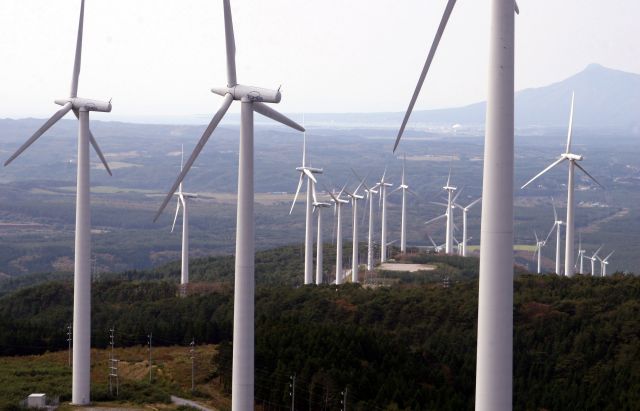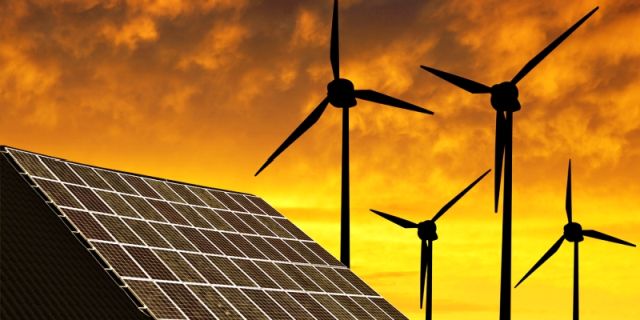
by admin | May 25, 2021 | Corporate, Corporate Governance
 Chennai : The reverse auction for determining wind power tariff should be scrapped in favour of closed/sealed bids if the Indian wind turbine manufacturers are to survive in the long run, said a top industry official.
Chennai : The reverse auction for determining wind power tariff should be scrapped in favour of closed/sealed bids if the Indian wind turbine manufacturers are to survive in the long run, said a top industry official.
He also said there should be clear policy for repowering – replacing of low powered turbines with high powered ones at the existing sites so that the increase capital cost gets reflected in the tariff.
“The Indian wind energy sector is truly an example for Make-in-India with major global wind turbine makers having a production base here.
“Around Rs 40,000 crore has been invested by the industry. It is now facing serious headwinds which if not addressed the industry may turn sick,” Ramesh Kymal, Chairman and Managing Director, Siemens Gamesa India and also the Chairman-Confederation of Indian Industry National Committee (Wind and Biomass) told IANS.
The wind power tariff touched a new level of Rs 2.64 per unit in the reverse auction conducted early this month by the Solar Energy Corporation of India (SECI) for putting up 1,000 MW capacity.
In normal auction, a product is sold to the highest bidder. In a reverse auction the sellers compete for business quoting their prices openly. The rates will gradually go down as sellers reduce their rates to get business.
On the other hand, closed or sealed bids are where companies quote their rates without revealing to others and the contract is given to the lowest bidder.
The new rate discovered is far below the Rs 3.46 per unit discovered in the auction held in February by SECI.
Till the advent of reverse auction for competitive bidding, it was the feed-in-tariff or negotiated tariff regime that existed giving the generators a comfortable price.
According to Kymal, State Electricity Boards (SEB) are not signing new power purchase agreements (PPA) and they are for renegotiation of already signed PPAs with wind power generators thereby forcing the equipment industry to stagnate.
“Like all other infrastructure projects, the bidding should be a closed one and not reverse auction done online. Why should one think closed bids are not transparent,” he said.
Kymal did not agree with the view that a bidder in a reverse auction would quote based on the project economics and a cheaper tariff would ultimately benefit the consumers.
“It may be true in theory. But in practice, it would lead to cheaper import of inefficient machines. Many of the thermal power plants with Chinese equipments are facing problems. Further cartels cannot survive for long in closed bids,” Kymal said.
Industry officials told IANS that wind power generators were able to quote low this time around as the equipment manufacturers were laden with inventory and they decided to dispose them at around 20 per cent discount.
“The inventory carrying cost was high and hence the industry players may have decided to cut their prices. But that does not mean the equipment prices too have found a new low like the power tariff,” Kymal said.
“We have scaled down our nacelle production. We started exports of blades to our sister companies in other parts of the world.
“We did not reduce our workforce as they were deployed in solar energy projects. But this situation cannot continue for long,” Kymal said about Siemens Gamesa India.
He said the Rs 2,64 per unit rate is an one-off event and eventually the tariff would settle down at around Rs 3.70 per unit.
Industry experts told IANS that if the central government is in favour of reverse auction then it should at least nudge the BJP headed and its friendly state governments to auction out projects instead of sitting tight.
Kymal said India added 5,500 MW of wind power last year and this year the fresh capacity addition will be much lower as vendors need a lead time of around seven months.
According to him repowering should be allowed with proper policy initiatives factoring the higher capital costs of new machines.
—IANS

by admin | May 25, 2021 | Opinions
 By Tim Buckley,
By Tim Buckley,
As world energy markets transform at an unprecedented rate, India is at the forefront of the shift towards profitable renewables given that the countrys solar belt has the potential of 749 GW for power generation. As shown by a new IEEFA (Institute for Energy Economics and Financial Analysis) analysis, accelerating this trend will allow India avoid the costly mistakes made by slow-moving, late-learning European utilities, which have wasted billions on stranded coal and other thermal power assets.
In Europe, the rise of cheap renewable energy has pulled down wholesale electricity prices, causing financial pain for utilities that have delayed their transition from fossil fuels to renewables. Over the 2010-2016 period, European utilities have made $150 billion in asset write-downs. Investors from Goldman Sachs and UBS have been warning for years that coal has reached retirement age and that solar will become the “default technology of the future”.
Similar trends have been apparent now for some time in China and India, where drives to install both thermal and renewable capacity concurrently have seen coal-fired power station utilisation rates drop to record lows of 47 per cent and 57 per cent respectively in 2016. This is despite electricity demand growing in these countries.
To illustrate further, the giant, 63 percent state-owned power company, NTPC, provides 25 per cent of India’s electricity supply and as such plays a critical role in the country’s economic activity. Historically dependent on coal-fired electricity generation, India’s power sector is moving in a starkly new direction. The Indian energy ministry is driving this trend, pushing the nation toward energy efficiency and renewable energy targets that are highly ambitious but in IEEFA’s view, entirely achievable.
The government has set a target of 175 GW of renewable energy by 2022, including 100 GW of solar and 60 GW of wind. India’s draft Third National Electricity Plan (NEP3) for the next two five-year periods, to 2027, unambiguously concludes that beyond the half-built plants already under construction, India does not require any new coal-fired power stations. The 50 GW of coal power currently under construction nationally will operate at just 50-55 per cent capacity. Where these proposed new plants don’t replace old coal, they will essentially become stranded assets operating largely as reserve capacity. NTPC has 15 GW of coal-fired capacity in development but plans to retire 11 GW of older capacity.
Despite its history as a fundamentally coal-based power generation utility, NTPC is now rapidly rolling out in-house, utility-scale solar projects and it is signing power purchase agreements for solar power from private solar operators at record low, deflationary electricity tariffs absent subsidies. It is even beginning an entry into the electric vehicle sector by setting up charging stations. NTPC has committed to contributing 10 GW of solar capacity to the overall 100 GW government national target, making the company a cornerstone facilitator of India’s national electricity transformation.
Loss-making European utilities are now looking to India for new, safe investment opportunities given the impressive renewable energy drive. One of the biggest European power companies, the French utility Engie, which lost a total of some $40 billion during 2010-2016 on fossil fuels and nuclear holdings, intends to invest $1 billion in Indian solar over the next five years whilst also considering wind power. Engie is also reported to be one of the parties interested in the purchase of Singapore-based Equis Energy’s Indian renewable energy portfolio.
Engie investors, like Indian officials, see that the transition from polluting to low carbon technology is where smart money is heading. Thus, Engie is undergoing a transformation plan, which includes a target that low carbon activities aiming to represent more than 90 per cent of earnings by 2018.
Engie and Italian utility ENEL are also amongst the international investors heading into South African renewables. The country has been running a renewable energy procurement programme that is internationally regarded as well-designed and successful. So far 2.2 GW of renewable capacity has been completed, attracting over $14 billion of investment.
But South African utility Eskom continues to fail to appreciate the future role of renewable energy as it continues with expensive giant new coal plants, Medupi and Kusile, even though electricity demand is falling. Eskom now has more than 5 GW of excess coal capacity even before most units of its new plants are operational.
South Africa, like India, is in transition. A key difference between the two nations is that electricity demand growth has stalled in South Africa which means any renewables growth immediately eats away at coal’s generation profile as in Europe. In India, continued demand growth can help NTPC avoid the huge losses in its existing coal fleet if that demand growth is increasingly supplied by renewables going forward. If you look at the evidence, there is only one safe bet to make billions and avoid European-style losses.
(Tim Buckley, Director of Energy Finance Studies at IEEFA, has 25 years of financial markets’ experience, having spent the majority of this time as a top-rated equities research analyst in Australia, and he has covered global and Asian equity markets. The views expressed are personal. He can be contacted at tbuckley@ieefa.org)
—IANS

 Chennai : The reverse auction for determining wind power tariff should be scrapped in favour of closed/sealed bids if the Indian wind turbine manufacturers are to survive in the long run, said a top industry official.
Chennai : The reverse auction for determining wind power tariff should be scrapped in favour of closed/sealed bids if the Indian wind turbine manufacturers are to survive in the long run, said a top industry official.
